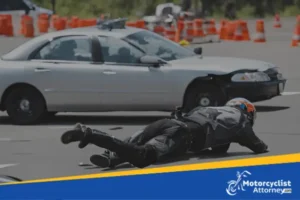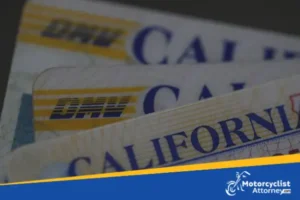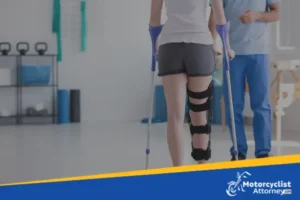California Motorcycle Laws in 2022: Rules Riders Should Live By

California is known for its vibrant motorcycle tradition and lifestyle. With the state’s enormous motorways and rugged country roads, such robust culture comes as no surprise. This is the primary reason why there are California motorcycle laws and regulations in place that are aimed at protecting motorcycle riders and facilitating safe road sharing with other motorists.
California motorcycle laws are more complicated than other types of motor vehicle legislation — and the state has some of the strictest in the country. If you or someone you know is ever harmed in a motorcycle accident in California, it is a good idea to talk with a motorcycle accident attorney from Motorcyclist Attorney. Given the complexity of the laws, the only way you can maximize your personal injury claim is if you get professional help from our team of motorcycle experts.
While motorcycle riders in California are subject to the same rules as drivers of four-wheeled vehicles. There are also laws, like the California motorcycle helmet law, that solely apply to motorcycle riders alone. Understanding and following these laws can help lower your chances of being involved in an accident that results in serious injuries or death.
Know your vehicle
In order to distinguish electric bicycles from motorcycles, at least in the legal context, California motorcycle laws designated classes.
E-bikes, as they are called, are motorized bikes that have pedals, a motor of less than 1,000 watts, and a top speed of 20 mph. They are not required to have insurance or registration, and the rider is not required to wear a helmet.
Mopeds are bicycles with pedals and a motor of less than 1,000 watts. They must have insurance and registration, and the rider is required to wear a helmet.
Motorcycles have a motor of more than 1,000 watts or a motor that can propel the vehicle at more than 20 mph on level ground. Riders are required to have insurance and registration, and they are also required to wear a helmet.
Under California motorcycle laws, the Department of Motor Vehicles (DMV) is authorized to issue special permits for the operation of electric bicycles on roadways. The DMV may also require an applicant for an electric bicycle permit to pass a safety inspection.
Motorcycle Ownership and Registration
Right after buying a motorcycle, you have to register it with the DMV. You will need the following to register your unit:
- Your California Certificate of Title, or the lienholder’s name and address (if you have a loan).
- Proof of insurance, such as a vehicle liability insurance policy, a DMV-issued self-insurance certificate, or a $35,000.00 surety bond from a California-licensed company.
- A valid California motorcycle license
- Fees that apply
Some quick reminders to add to the points above:
- Motorcycles, unlike cars and trucks, do not require a smog check before registration.
- You must register your motorcycle as an off-highway vehicle if you intend to use it off public roads and highways (OHV).
Getting Your License In California
According to California motorcycle laws, before applying for a motorcycle license, all riders must first obtain a learner’s permit. Riders under the age of 21 must have a permit for at least six months before applying for a license.
All applicants for a learner’s permit must pass a vision exam, a skills test, and a knowledge test covering information from the California Motorcycle Handbook. The skills test usually includes:
- Pre-trip inspection
- Riding in different track paths
- Slow riding
- Gear shifting
Applicants under the age of 21 must also complete the California Motorcyclist Safety Program training course, which is administered by the California Highway Patrol.
Permits are valid for 12 months from the date of issuance and prohibit drivers from doing the following:
- Transporting passengers
- Driving on the interstate
- Driving late at night
M1 and M2 Licenses
To legally ride a motorcycle, you must first pass certification and licensing tests administered by the DMV. An M2 license entitles you to operate only electric or motorized bicycles, mopeds, and scooters. An M1 license is required to operate a motorcycle, but it also enables you to operate any vehicle that an M2 license allows.
California Motorcycle Safety Requirements
California motorcycle laws require every unit to meet the following safety standards:
- At least one mirror that provides a view of the vehicle’s rear from at least 200 feet away
- Turn signals at the front and rear (motorcycles built in 1973 and newer)
- Automatically turning on and remaining on while the engine is running (motorcycles built in 1978 and newer)
- Exhaust system with tamper-resistance (motorcycles built in 2013 and newer)
Additionally, to legally ride a motorcycle in California, your feet must touch the ground while seated, and your hands may be elevated no more than six inches above shoulder height while seated (California Vehicle Code §27801).
California Motorcycle Helmet Law
Motorcycle riders and passengers in California are required to wear safety helmets. The safety helmet’s manufacturer must certify that the helmets used comply with the safety regulations of the Department of Transportation (DOT).
The California motorcycle helmet law (California Vehicle Code 27803) also requires that helmets utilized by riders and passengers must have a DOT sticker. These helmets must also be fastened with straps and fit the rider’s head securely when fastened, with no “excessive lateral or vertical movement.”
When a motorcycle rider or passenger sustains a head injury that could have been avoided with a helmet, the failure to wear one can affect liability for the accident. However, the rider’s failure to wear a helmet does not absolve another driver of responsibility for causing a collision.
Because California is a comparative negligence state, if the driver who caused your accident is even partially to blame for your injuries, you can still seek compensation from them in proportion to their share of fault.
On Carrying Passengers
Any fully licensed California motorcycle operator (that is, someone with a Class M1 license rather than a learner’s permit) can transport people on their motorcycle. Passengers must be at least 16 years old to ride a motorcycle.
On the other hand, California law mandates that motorcycle passengers sit on a seat securely fastened behind the driver and equipped with footrests, or in a sidecar built for passenger transport (California Vehicle Code 27800). While the motorcycle is in motion, passengers must wear DOT-compliant safety helmets and keep their feet on footrests.
Other California motorcycle laws to take note of:
- The state of California is the only state where “lane splitting” is permitted. This means motorcycle riders are permitted to travel between lanes of traffic traveling in the same direction.
- California law mandates that all motorcyclists, regardless of age, wear a helmet.
- All motorcycles built after 1978 are obliged to have daytime running lights.
- The statute of limitations gives a biker only two years to pursue a lawsuit after being involved in an accident.
Connect With Motorcyclist Attorney Today
Motorcyclist Attorney’s California motorcycle accident lawyers work hard to get you the compensation you deserve for your medical bills, lost wages, and pain and suffering. We will gather the evidence needed to prove that your injuries were caused by the negligence of another party and fight to hold negligent drivers accountable for the harm they have caused you.
Schedule a free, no-obligation consultation with an injury lawyer from our firm today to learn more about your legal options. Our attorneys work on a contingency fee basis, which means that we only get paid if we help you recover compensation.
Now is the time to call 824-2955! Get the justice that you deserve with us at Motorcyclist Attorney. We speak English and Spanish. Contact us today for your free case value estimate.




